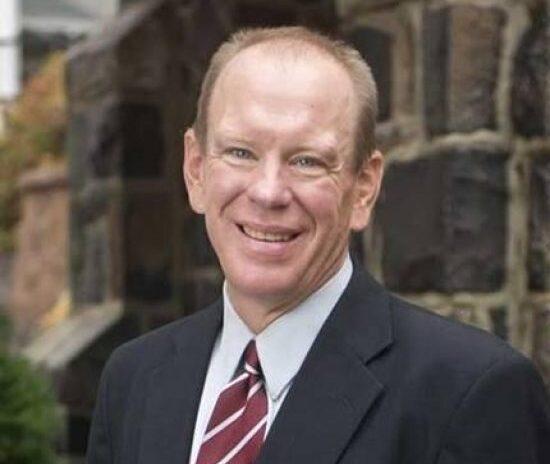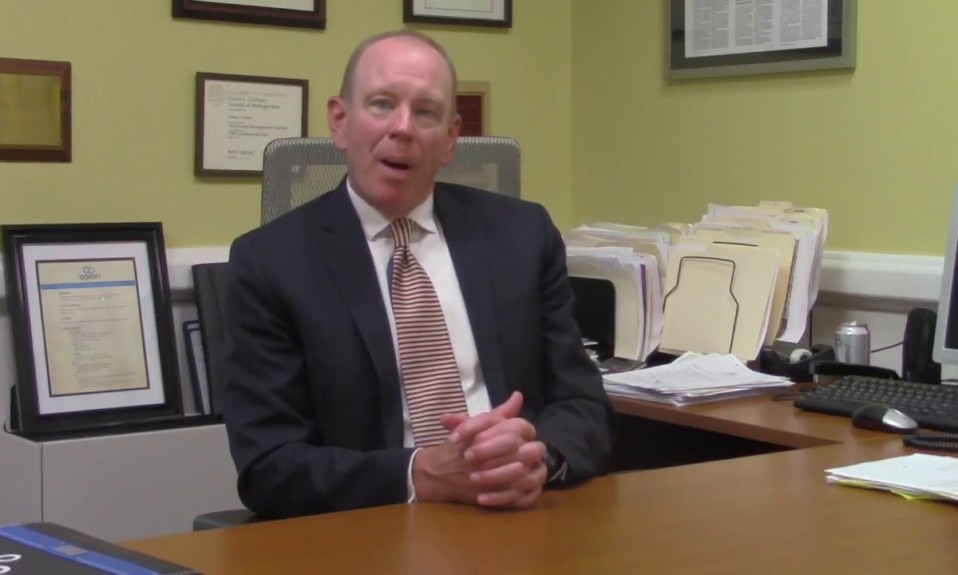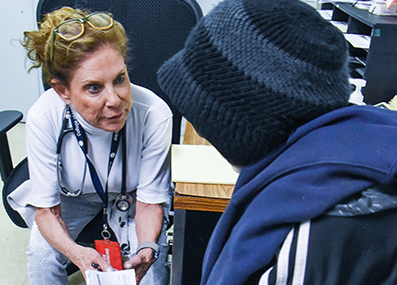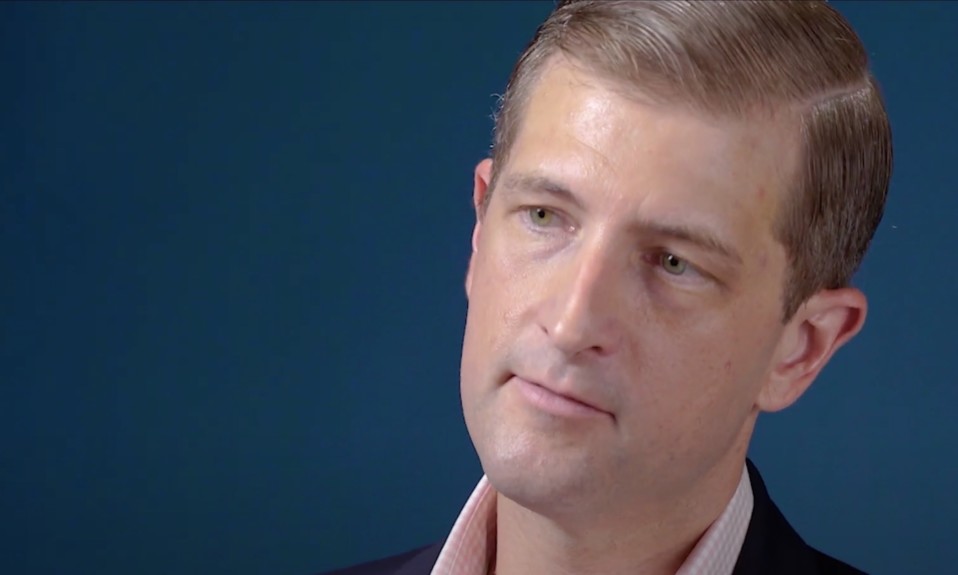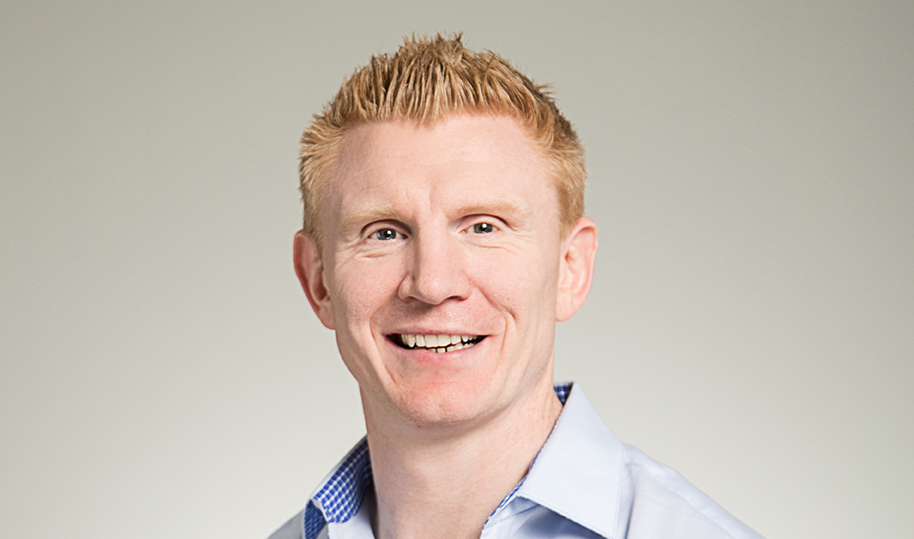On the eve of his retirement, we look back at this addiction center leader’s accomplishments and his thoughts on reducing shame, the effect of private equity on our industry, and his goals for the future
By Jason Langendorf
October 6, 2020Douglas Tieman has led Caron Treatment Centers, a nonprofit addiction treatment group based in Wernersville, Pa., as president and CEO since 1995. A former teacher and fundraiser, Tieman has been an advocate for evidence-based research and preventative measures in addiction treatment that improve outcomes and efficiency in the industry.
Tieman has served as chair of the National Association of Addiction Treatment Providers, testified before the House Energy and Commerce Committee’s Oversight and Investigations Subcommittee about patient brokering and fraud in addiction treatment, written a book, Flying Over the Pigpen: Tried and True Leadership Lessons from Growing Up on a Farm, and has been in recovery for 12 years.
I just really fell in love with this cause. For what it’s worth, I had my own substance use disorder and went to treatment. It’s been, for me, a very blessed ride.”—Douglas Tieman, president and CEO of Caron Treatment Centers
Last month, shortly after our interview with Tieman, Caron announced that the CEO and president will retire from his position in June 2021. “I am proud of how Caron evolved to focus on evidence-based protocols and prioritize science and medicine, while keeping a strong foundation of spiritual recovery,” Tieman said. “I hope my legacy will be our work to raise the bar on treatment and reduce the stigma and shame that surround this disease.”
Caron’s 5 Tools for Addiction Treatment Success
The tracking of addiction treatment outcomes is a subject Tieman spoke about at length in our interview, and he offered five that Caron has deemed most important to long-term treatment success:
- Segmentation (to account for the unique qualities of different populations)
- Staffing medical and mental health professionals who can address patient comorbidities
- Family programs; approaching addiction as a chronic illness
- A continuum of care
- Aftercare contact and communication with patients
On the eve of his retirement, Tieman offers his goals and thoughts for addiction treatment now and next, how to elevate treatment outcomes, and his work at Caron and over 37 years in our industry.
Q: What led you to the profession of addiction treatment?
A: I’ve been in nonprofit work my entire career. I started out as a teacher, I worked in the academic setting, I moved from a teacher to a fundraiser, and I got recruited by Hazelden in 1983 to raise money to start a facility in Florida.
I really did not know much about the addiction treatment field at the time. I call myself a career do-gooder, which is what a lot of people who enter the nonprofit world are—whether you’re a nurse, doctor, social worker or teacher. That’s kind of what I considered myself, and this seemed like a really interesting cause for an underserved population.
I actually thought I would probably either go into generalized healthcare, like working at a hospital, or I would go back to academia. But I just really fell in love with this cause. For what it’s worth, I had my own substance use disorder and went to treatment. It’s been, for me, a very blessed ride. Not only was I able to have a career that’s been especially rewarding, I was able to get my own personal recovery—which is even better than what the career has been.
Q: It’s remarkable how many people in the field have direct ties to addiction treatment in that way. Given your experience in the field, was there anything that helped guide you in terms of seeking or approaching your own treatment?
A: Somewhere like five to seven years before I went into treatment, I knew enough that I could see what was happening, understood what was happening. So if you have the appropriate brain chemistry for addiction, willpower, intelligence, knowledge, “I go to church every Sunday”—any of these aspects that you think can help prevent this illness, I’m a case study that [they do not].
I love what one guy told me, a good friend in recovery, who said, ‘Let’s be honest: Nobody goes to substance use treatment because they’re on a winning streak.’”—Douglas Tieman
I could see, and knew, exactly what was happening to me. And the thing that actually was interesting is that, because of all of those attributes, I actually delayed getting help. I mean, that’s how cunning and powerful this illness is. In spite of the fact that I knew what was happening, until I had a significant consequence, I was not able to get help. I love what one guy told me, a good friend in recovery, who said, “Let’s be honest: Nobody goes to substance use treatment because they’re on a winning streak.”
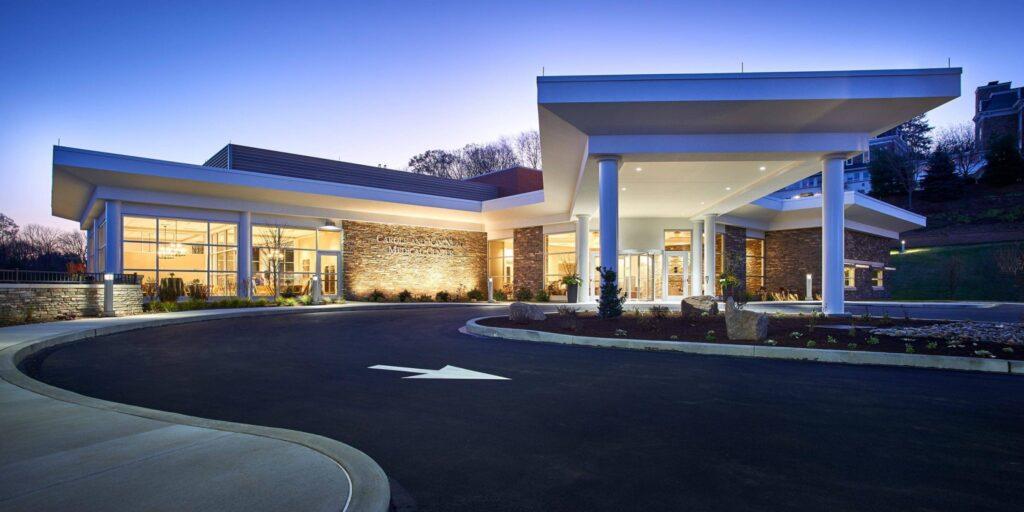
Q: What sorts of treatments, therapies and approaches do you favor, or are most common, at Caron?
A: We have the luxury of being an evidence-based facility. Everybody’s going to talk about that, but the thing that kind of sets Caron apart is that we have 14 physicians on our staff, all of whom have academic affiliations with leading institutions. So we then have a professional advisory board made up of researchers from places like Brown, Harvard, Johns Hopkins, Penn and Stanford, so we can stay on the cutting edge of the development of effective treatment protocols. All of it—things like 12-step facilitation, trauma-informed treatment, MAT, CBT, neurofeedback—would be commonplace at Caron.
Wilson Compton, the associate director of the National Institute on Drug Abuse [NIDA], compared substance use treatment to cancer. A number of years ago I heard him say that in the ’60s, we didn’t like talk about the C-word—there was a stigma. Unfortunately, if you happened to have cancer and you went to someone who believed in surgery, you had surgery. If you happened to go to a physician who believed in radiation, you got radiation. If you happened to go to a physician who believed in chemo, you got that. Eventually, you realize there are protocols that favor one over the other based on your particular diagnosis—and sometimes there are several of them that might be utilized at the same time. And we need to do the same for substance use treatment: reduce the stigma and have good diagnostics so that we utilize the appropriate treatment protocol.
What we’ve tried to do at Caron, because of our size and our sophistication, is utilize the ASAM [American Society of Addiction Medicine] patient placement criteria effectively, and line the person up with their best chance, the best protocol for recovery, given their unique situation. As opposed to, say, most places, where if you call, you’re a customer and we’re going to try to convince you that what we have is the right solution.
Q: How do you track and measure outcomes at Caron?
A: This has been the slippery potato that everyone’s trying to grab. If you go back to the ’80s, there was an organization called New Standards, which developed a follow-up protocol that most treatment centers in the United States utilized. It was the classic outside agency. They took a random set of people that completed treatment, they would then call them up to see how they were doing, and then you would get a report from them that also compared you with others.
[But there was] nothing that was a nice sort of benchmark to begin with. As you can imagine, from a pure research and outcome perspective, as we became more sophisticated in our field, we became highly critical of this approach because there was no way to do two important things: One was, the response rate was very low; the second thing was, there was no way to verify whatever the person said was right or accurate.
So then, in about 2000, a couple of us—Hazelden, Betty Ford and Caron—actually hired the Treatment Research Institute, which was part of the University of Pennsylvania, to develop a more sophisticated way of doing outcomes. Because every time our field was trying to get mental health parity passed and every time we would talk with policymakers in D.C., they would say, “Prove to us this works.” And we never really could.
At almost every other treatment center, roughly half of their people need to be re-treated over the course of the year—which is an additional expense—whereas 1 in 5 at Caron need to be re-treated.”—Douglas Tieman
Lots of good anecdotal information, some subjective information, testimonials. But if we send 100 people to treatment, how many of them are sober a year later? How many are sober five years later? What are the healthcare costs? What are the healthcare savings? None of that could be quantified. So the three of us engaged the Treatment Research Institute to do some follow-up for us.
The good news was, we found that everybody who did respond would get extremely well. So we kind of came up with a theme at Caron: Those who stay connected stay sober. Now, there are a lot of ways to stay connected. It’s a chronic illness. So staying connected to something is really important. We did that for a decade or so. Even raised money: The Annenberg Foundation provided an endowment to help fund it. By the way, it’s very expensive to do this. Why don’t most people do it? It is extremely expensive. So as a nonprofit, we were able to raise some money to help us with this.
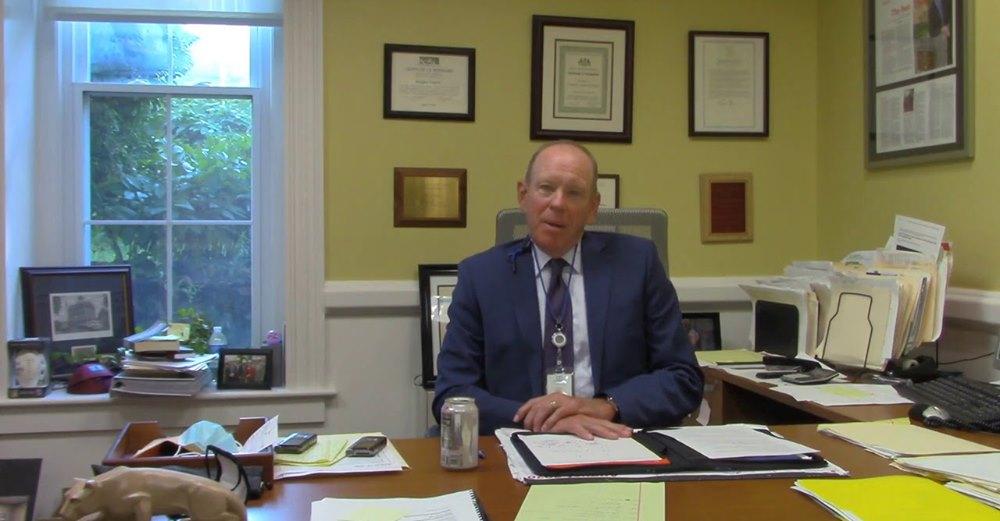
Q: And then you partnered with an insurance company—on an innovative new approach. Tell us about that.
A: Probably six or seven years ago, we moved into a different kind of way of identifying outcomes. We decided to put our efforts into something, again, that was developed by the Treatment Research Institute. We followed somewhere between 8 to 12% of our patients and called it My First Year Recovery. In addition to the person, we also have someone from the family, typically a clinical person. But we asked the patient to give us some people we can check on you with over the course of the year, some people that can call us if they’re ever concerned about you. And we’re also going to randomize urine drug screens so we have some biological testing. This population has done extremely well, and we have this data on our website.
Probably the best thing that we have is something Independence Blue Cross started with us in 2015. Long story short, we develop a plan where we get to drive the care, they pay us more and their CEO, rightfully so, said, “If we’re going to pay you more and let you determine what happens, we expect better results.” That seems fair.
And then Independence Blue Cross said, “We’re going to test you and we’re not going to tell you how we’re testing you.” OK, that seems fair, too. So, for three years, we didn’t know what the test was.
Then in 2018, they said, “We’re going to share with you the results of that test. OK, so here’s what we looked at: No. 1 was, we wanted to see what the re-treatment rate was at Caron versus other treatment centers that we utilize,” and there’s a couple dozen that they utilize.
The CEO said, “You’ll be amazed to know that in 90 days”—which is the first thing we look at—“the number of patients we send to Caron, about 8% need to be re-treated. Other treatment centers were 20%.” So he said, “We’re actually not having to re-treat your group at the same rate.” And he said, “But here’s what’s most amazing: At the end of one year, the re-treatment rate at Caron is 20%, whereas the next-closest was 42%.”
So in other words, at almost every other treatment center, roughly half of their people need to be re-treated over the course of the year—which is an additional expense —whereas 1 in 5 at Caron need to be re-treated.
And he said, “Then the most important test for us is what does all this cost?—we’re in the insurance business. Your cost savings of your patients over this three-year period has been profound.” They’re still trying to quantify the dollars, but he said, “We feel that over the course of the year, for every hundred people we send to Caron, we save roughly $10,000 per patient—even though we pay you more.”
In other words, don’t look at what it costs you, look at what it saves you when you get good substance use treatment. That’s a real key part of our kind of philosophy: looking at this as a chronic illness. Too much of our American society looks at this as an episode. Families say, ‘Oh my God, it’s so great: We got our son into outpatient. Oh my God, he’s sober living, this is great.’ And all of those are good steps. But that’s all they are.
It would be like if someone who has high blood pressure says, ‘Oh, my God, it’s great: I took my hypertension medicine for a week.’ Well, if you don’t keep taking it, guess what? It comes back.
Q: How do you think the treatment community as a whole can improve outcomes?
A: That’s really the question. There are two important components from an overall policy, an enlightened-policy, perspective. From government, corporate America, insurance America, the general public. First, we need more money so that people can get good treatment. Because appropriate follow-up is costly. And most treatment is good treatment. But most treatment isn’t long enough; we don’t look at it as a chronic illness. And so going back to the point of, “We’ll pay for you to go to residential treatment, but now you need all these other step-down services—you don’t get them.” So money for treatment, as a chronic illness, is really key.
And then the second part of that is for the financial resource to actually do the research on outcomes, being able to quantify what works. Our field just does not have the resources for the treatment and we don’t have the resources for the follow-up studies. So I look at that as, the big policy decisions—whether it’s publicly funded treatment—government needs to make sure this is available.
To have doctors, psychologists, individualized family programs—there’s a fair amount of cost to that. The only reason we’re able to do it is because, as a nonprofit, we’re not shy about asking for money. This last year, we raised a little over $16 million in philanthropy. And we do that year in and year out because it makes it possible for us to do all of these pieces.
Q: If you were a policymaker, what would be the one thing or the first thing you’d change or address in addiction treatment?
A: Well, more money is too cliché. More money for access and money for research, but…any expansion of treatment, rather than the criminal justice system, has been demonstrated to be extremely effective; drug courts are extremely effective. I don’t have the numbers off the top of my head, but individuals who go through drug court, maybe only 2 out of 10 returned to the criminal justice system in five years.
Whereas that same person who has a substance use disorder, if they don’t go to drug court, then it’s inverted: 8 out of 10 will be back there. I’m a big believer in consequences. We do need to have some consequences for the bad behavior we had. But let’s get us help. We’re not bad people who need to be made good. We’re sick people who need to get well. Do we need to pay something for some of the bad activity? Absolutely, sure. But let’s get us help.
Q: What’s your approach to hiring at Caron? How do you choose the best clinicians?
A: We look for expertise and also fit. We tend to hire people at what I would call lower to middle range and then have a strong training department at Caron. We have kind of a grow-your-own philosophy: people who buy into our treatment protocols and fit culturally. We’ve had a terrific relationship with Alvernia University. They were one of the first academic institutions in our country, way back in the ’70s, to kind of decide to make addiction counseling a degreed program.
Back in the day, back when I started, you had to have a high school degree and do some training and then eventually it became a two-year degree and then a four-year degree, which oftentimes was in something like social work or psychology.
But Alvernia decided to actually develop an addiction counselor program. So the fact that they’re just around the corner from us, we’ve developed a very strong relationship with them and, frankly, hire a lot of their graduates. Many of them do internships at Caron. So that that has been a very good partnership for us. Many of our advanced clinicians then are on the faculty, in their undergraduate program. They also have a master’s program in counseling, which many of our staff have completed at Alvernia as well. So that’s been an important partnership for us in helping us to grow our own.
When private equity brought this Wall Street mentality to our field in 2010, a lot of good things happened. But it also brought the approach that we’ve got to compete with each other. …Our field has done better when we collaborate rather than compete.”—Douglas Tieman
Q: What is your top treatment takeaway: What have you learned over your years working in addiction or addiction treatment that you’d like to leave us with?
A: First of all, good treatment works. It’s extremely cost-effective and life-transformative. That probably goes without saying.
But the other thing I would say is: Our field has done better when we collaborate rather than compete.
When private equity brought this Wall Street mentality to our field in 2010, a lot of good things happened as a result of that: more capitalization, more sophistication, more professionalization, better compensation, better facilities, better IT. All that is really good.
But it also brought the approach that we’ve got to compete with each other. We’ve got to do better than someone else in our field. But there are plenty of people suffering from substance use disorder out there. In fact, there’s too many people suffering. There are plenty for all of us. Let’s work together to get everybody help instead of competing with the treatment center down the street. With collaboration, versus competition, we all do better.


